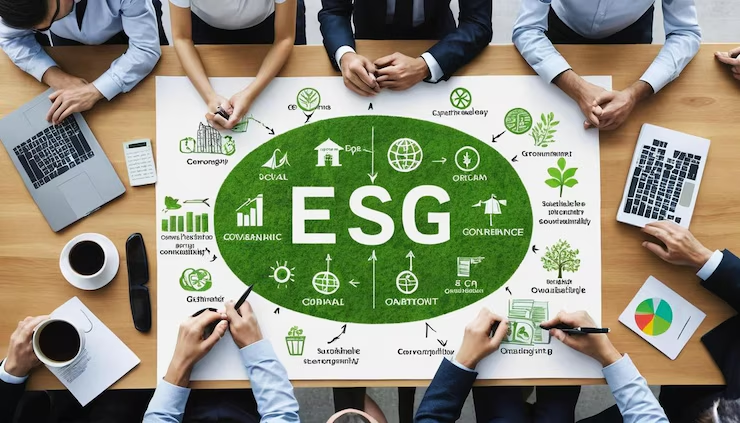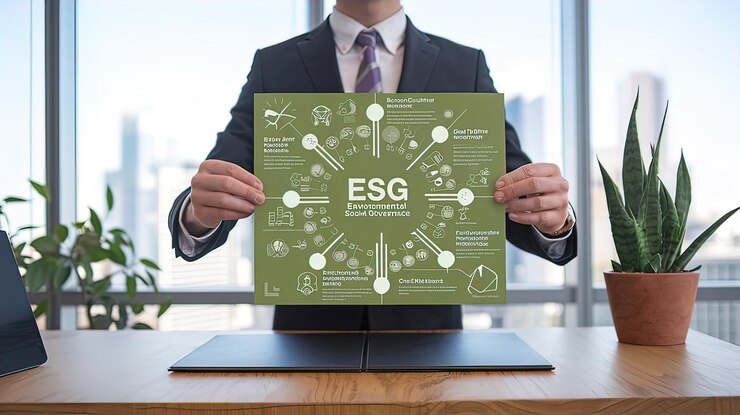Top Global Regulations Shaping ESG in 2025
Your Must-Know Guide

Imagine running a business in 2025, and suddenly, regulators worldwide are demanding you prove you’re green, fair, and legit. That’s ESG (Environmental, Social, Governance) in action, and it’s no joke. With $50 billion in ESG funds circling India and the EU’s CBAM threatening $8 billion in tariffs, new rules are flipping the game. From Europe’s CSRD to India’s BRSR Core, the U.S.’s shaky SEC Climate Rule, and Singapore’s SGX reporting, these regulations are your roadmap or your roadblock. At WOCE, we’re spilling the tea on what’s shaping ESG today. Grab a coffee and let’s dive into the top global rules you can’t ignore.
EU CSRD: The ESG Heavyweight
The Corporate Sustainability Reporting Directive (CSRD) is Europe’s ESG boss, hitting 50,000 companies by 2029. Launched in 2023, it replaced the old NFRD and demands hefty details on your environmental, social, and governance impacts. Large firms (over 1,000 employees or €50M turnover) started reporting in 2024 for 2025, while SMEs get until 2028 (per February 2025 tweaks,).
Here’s the kicker: CSRD’s double materiality means you report how sustainability hits your wallet and how you impact the planet. Think Scope 1-3 emissions, biodiversity, and worker rights, over 1,000 data points across 12 categories. Indian exporters with €150M EU sales? You’re on the hook by 2028. With CBAM’s tariffs looming, a Mumbai textile firm could save millions by nailing CSRD now. It’s tough but fair, pushing Europe’s 2050 net-zero goal.
SEC Climate Rule: America’s Wobbly Step
Across the Atlantic, the SEC Climate Rule (March 2024) was meant to make U.S. companies spill their climate secrets. It demanded Scope 1 and 2 emissions, plus Scope 3 if it’s a big deal, alongside climate risks and transition plans. Big firms were set to start in 2026. But in April 2025, the SEC hit pause amid legal fights, and a Trump-led 2025 vibe might scrap it.
Still, don’t sleep on the U.S. California’s SB 253 forces firms with $1B revenue to report Scope 1-3 by 2026, and investors want data. For Indian IT firms in Silicon Valley, tracking emissions now keeps you ahead of state rules and fund managers. The SEC rule’s wobble doesn’t mean you’re off the hook, global pressure’s still on.
India BRSR Core: The Global South’s Star

India’s BRSR Core is killing it. SEBI’s Business Responsibility and Sustainability Reporting, mandatory for top 1,000 listed firms since 2022, is a global South flex. It covers nine principles, ethics, environment, human rights with 140 questions on emissions, water, and diversity. In FY 2023, 94% of top 300 filers cut emissions intensity by 14% (industry reports).
BRSR Core, rolling out since 2023 for top 150 firms, demands reasonable assurance on nine KPIs (like Scope 1-3 emissions) by 2027 for all 1,000. That’s a first for non-financial audits globally. With $10 billion in ESG assets (May 2025), firms like TCS ride BRSR to investor love. SMEs in supply chains? You’ll feel the heat as BRSR hits value chains by 2027.
Singapore SGX: Asia’s Green Blueprint
Singapore’s SGX Sustainability Reporting is Asia’s ESG gold standard. Mandatory since 2016, it’s TCFD-aligned by 2025, requiring Scope 1-2 emissions (Scope 3 optional) and governance details for listed firms. High-impact sectors (e.g., energy) report by FY 2024, others by FY 2025. SGX’s 27 Core ESG Metrics cover emissions, diversity, and corruption, with assurance encouraged.
As a $1 trillion financial hub, Singapore channels green cash. Indian exporters to ASEAN or SGX-listed firms need TCFD compliance to stay in the game. A Chennai manufacturer syncing with SGX metrics could snag regional investors. SGX’s clarity makes it a model for India’s SMEs eyeing global markets.
esgpro.ai: Your ESG Sidekick
These regulations sound like a headache, right? esgpro.ai is your fix. This tool pulls Scope 1-3 emissions, water, and social data, spitting out reports that match BRSR’s 140 questions or CSRD’s 1,000+ data points. Its dashboards track your progress, align with GRI or TCFD, and prep you for BRSR Core’s 2027 audits. Indian firms can use it to dodge CBAM tariffs or impress SGX investors, all without Excel nightmares. It’s like having an ESG nerd on speed dial.
The 2025 Stakes: Why You Can’t Snooze

In 2025, ESG rules are a global sprint. CBAM’s 2026 tariffs could sting Indian exporters for $8B. BRSR Core makes India a leader, but weak transition plans need work. The SEC’s drama leaves U.S. firms leaning on state laws like California’s. SGX proves Asia’s seriousness about green cash. Plus, 80% of Indian Gen Z want sustainable brands (2025 surveys), and greenwashing a trap, 335 EU funds rebranded in May 2025 to avoid heat (Lexology).
Get Moving: Your ESG To-Do List
Feeling overwhelmed? Here’s your playbook. For BRSR Core, start logging Scope 1-3 emissions now. For CSRD, map your impacts if you’re in the EU market. For SGX or SEC, get TCFD-ready with Scope 1-2 data. Use tools like esgpro.ai to cut the chaos. Train your team, India’s ESG skill gap is no joke. The rewards? Cheaper loans (10-20% off, per RBI), happier investors, and a slice of India’s $5 trillion economy by 2030.
Wrap-Up: Rule the ESG Game
In 2025, CSRD, BRSR Core, SGX, and the SEC Climate Rule (if it survives) are your ticket to trust, cash, and growth. They’re not just hoops to jump—they’re your launchpad. WOCE’s got your back to navigate this green wave.
Ready to crush ESG? Contact WOCE at contact@worldofcirculareconomy.com to lead the charge in 2025!




